Hai Van Pass In Vietnam A Scenic Journey Through The History
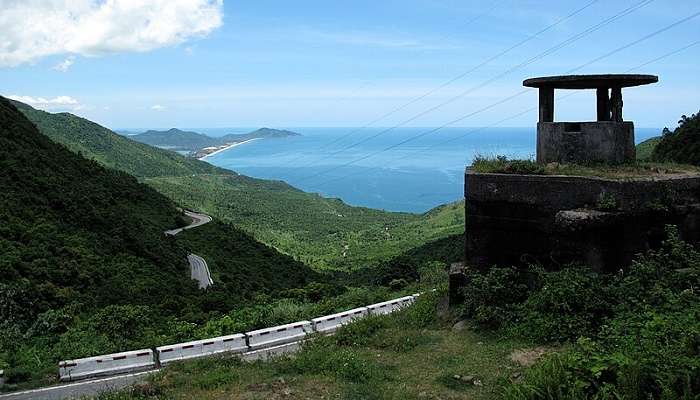
The Hai Van Pass in Vietnam, translating to “Ocean Cloud Pass,” carves a dramatic path through Vietnam’s central coast. This 21-kilometre stretch on National Route 1A winds its way through the Annamite Range, offering breathtaking vistas of the East Sea and a glimpse into Vietnam’s rich history. Once a crucial artery connecting Da Nang to Hue, the pass has evolved into one of the famous routes in Vietnam favoured by motorbike riders and a testament to Vietnam’s enduring spirit. Today, it remains a popular destination for tourists seeking both adventure and serenity, as well as a key attraction for those interested in Vietnam’s natural and cultural heritage.
About Hai Van Pass In Vietnam
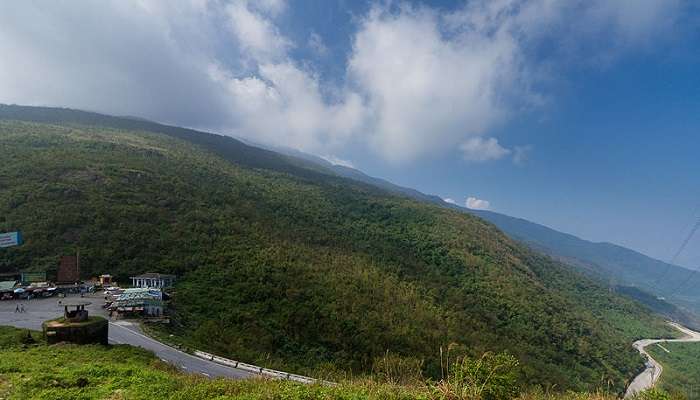
The Hai Van Pass is a strategic location in Vietnam with a multi-layered identity. The Hai Van Pass has old outposts and bullet-riddled fortifications to maintain its historical integrity. There is a geographical significance to this pass as well. It causes a climate divide wherein the northern part of the pass experiences a subtropical climate while the south experiences warm and humid temperatures. The construction of the Hai Van Pass itself is a marvel of engineering. Completed in the early 20th century by French colonists, the sinuous road snakes its way up the mountainside with breathtaking hairpin turns and panoramic views. Above all, the Hai Van Pass currently serves as one of the famous roads in Vietnam for tourists.
Must Read: Places To Visit In Vietnam With Family
Best Time To Visit Hai Van Pass
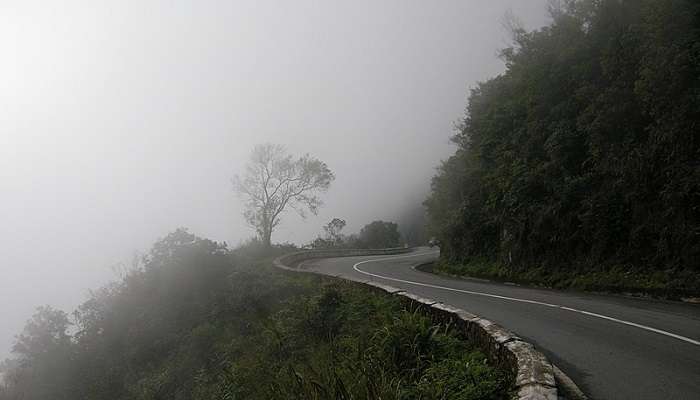
The best time to visit is usually from February to April, thanks to clear skies and minimal rain. However, these months coincide with the peak tourist season, so be prepared for extensive crowds.
For some respite from the crowds, consider visiting during May and September. The weather is comfortable, and the possibility of an unexpected shower is quite low. The highlight lies in fewer crowds, so your drive through the pass won’t be muddled in long traffic.
Entrance Fee And Timings Of Hai Van Pass
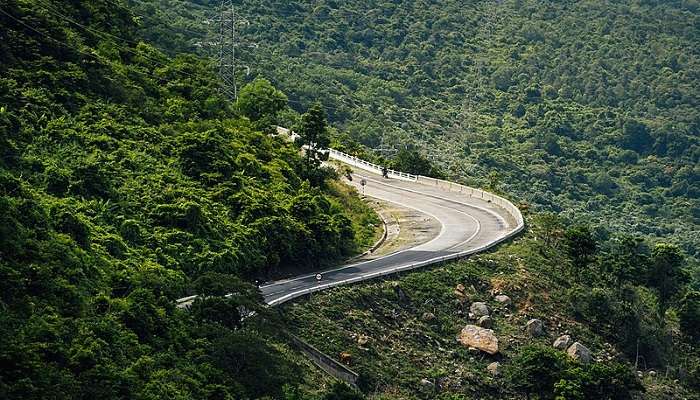
Though one of the most famous roads in Vietnam, there is no entrance fee to access Hai Van Pass. However, it’s important to note that the old scenic route is only accessible by motorbike or bicycle. If you own a car or a larger vehicle, you’d have to take the Hai Van tunnel, which bypasses this scenic pass. You will miss out on the hairpin bend and the historical spots in this sightseeing spot. The old route is open to tourists 24/7. Remember, the roads have sharp bends and can become slippery during monsoon, so drive cautiously.
Suggested Read: Heritage Sites In Vietnam
Things To Do In Hai Van Pass
1. Motorbike Adventure

Since the Hai Van pass is only accessible via two-wheelers, indulging in a motorbike adventure should be at the top of your list of activities. Driving on a motorbike takes you through winding roads, breathtaking views and fresh mountain air. But, above all, the exhilarating experience of driving through this route tops the list. All that said, ensure you have a valid driving licence for motorbikes. The routes can get steep and unexpected, so stay alert while driving, but it is worth it as one of the things to do in Hai Van Pass.
Timing: January to March
Major Attractions: Scenic roads, mountains
2. Panoramic Vistas

Several viewpoints are along the Hai Van Pass route. Each one offers a breathtaking view of the nearby coastline and the surrounding mountains. Some of the must-stop locations along the way are Hai Van Quan, Hon Do, and Wolf Point. Spend at least 10-15 minutes at each viewpoint to soak in the views of the surroundings.
Timing: September to March
Major Attractions: Hai Van Quan, Hon Do, Wolf Point
Suggested Read: Lakes In Vietnam
3. Historical Sites

The Hai Van Pass is steeped in history, something every tourist needs to learn about. Along the way, you can also stop at a few of the historical spots to explore the remnants of the French Colonial Outposts and the Hai Van gate. This historical gateway marked the boundary between the former kingdoms of Champa and Dai Viet. There are locations where you can spot war relics as well.
Timing: September to March
Major Attractions: French Colonial Outposts, Hai Van Gate, Dai Viet
4. Hiking And Trekking

Although not that common of activity, the nearby nature trails around Hai Van Pass offer a great opportunity for tourists to explore hidden gems. However, due to the altitude, network communication and signals might be weak. If you are exploring unknown routes, either have an offline GPS or hire a guide to help you explore those trails safely.
Trekking Duration: 2 -3 Hours
Things To Carry: GPS, trekking gear, water bottles, warm clothes
Suggested Read: Landmarks In Vietnam
5. Photography

The winding roads and panoramic views of nature’s splendour make it an amazing site for photographers to rejoice. Vibrant, blooming flowers on the sides of the road add to the simplicity yet beauty of this pass. You can stop to capture the surrounding landscapes with your camera.
Best Time For Photography: Morning, sunset
Major Attractions: Landscapes, Seaview, road
Places To Visit Near Hai Van Pass
1. Da Nang
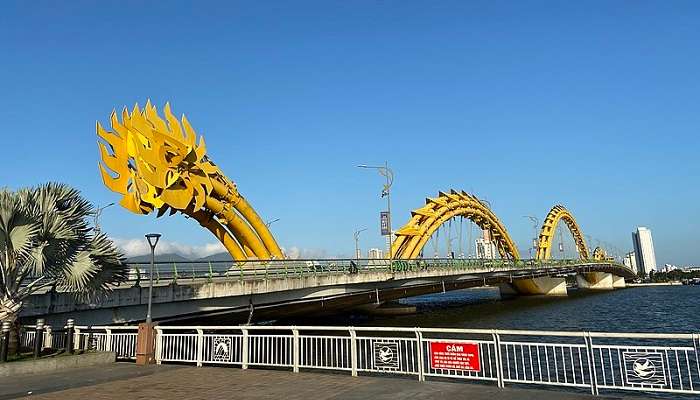
It is located south of Hai Van Pass and is a vibrant coastal city home to My Son Sanctuary, a UNESCO World Heritage Site. You can explore these historical Hindu temples and then go towards the beaches of My Khe or Non-Nuoc to relax and sunbathe. Besides that, this coastal city’s nightlife and street food add to the place’s allure. Lastly, witness the engineering marvel of the Marble Mountains as well.
Cost: USD 700 onwards
Major Attractions: Ba Na Hills, My Khe Beach, Dragon Bridge etc
Suggested Read: Places To Visit In Hoi An
2. Lang Co Beach
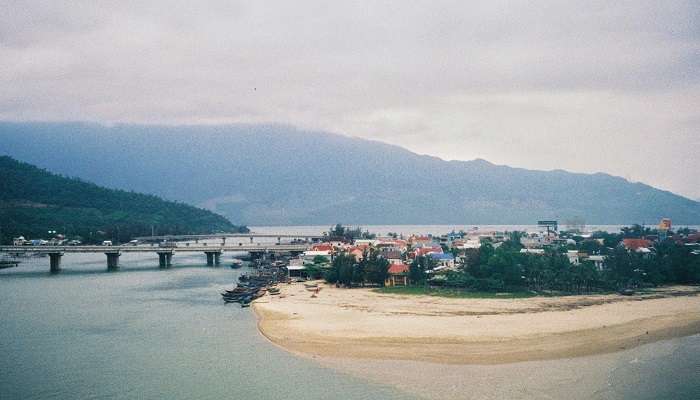
In the middle of Hai Van Pass and the East Sea, Lang Co Beach is another popular sightseeing spot worth adding to your itinerary. The coastline boasts fine white sand, crystal-clear turquoise waters, and a laid-back atmosphere. You can indulge in a diverse range of water sports like kayaking, and paddleboarding on the beach. You can learn how to rent the items from trained operators.
Cost: USD 100 onwards
Major Attractions: Beaches
3. Bach Ma National Park
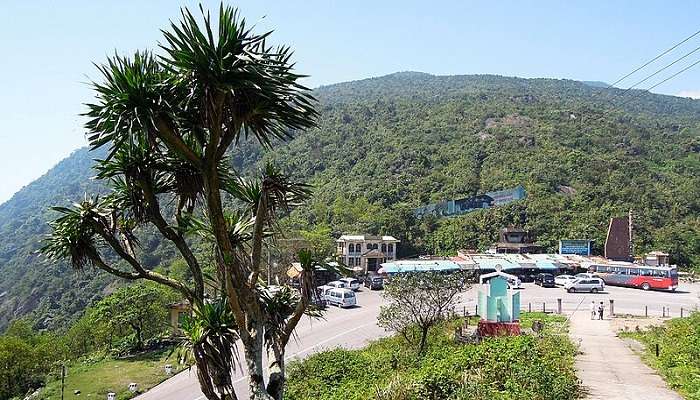
On the west of Hai Van Pass, around 43 km away lies the Bach Ma National Park. Besides the rich biodiversity of wildlife and birds, the national park is also a great place to embark on adventurous hikes along the nature trails. The spectacular Do Quyen Waterfall also resides inside the national park. There is a French colonial hill station in its vicinity as well.
Cost: VND 60,000 for adults and VND 20,000 for children
Major Attractions: Nature trails, Do Quyen Waterfalls
Suggested Read: Rivers In Vietnam
4. Cham Islands
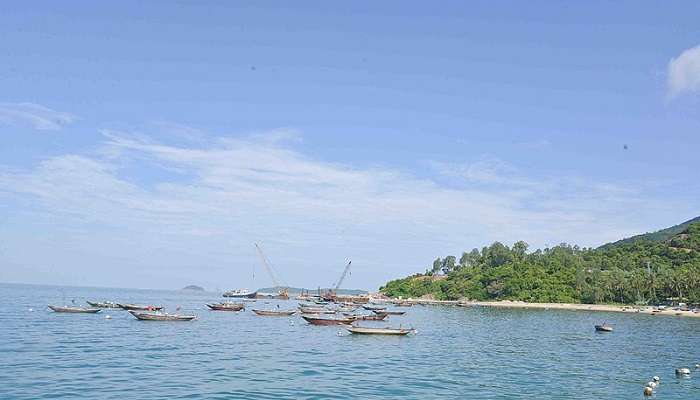
Cham Islands is located around 48 km off the coast from the Hai Van Pass, a scenic spot. It consists of a group of eight islands offering pristine beaches, coral reefs teeming with marine life, and a laid-back atmosphere. You can explore the island on a rental motorbike or by snorkeling or scuba diving at different water spots.
Cost: USD 100 onwards
Major Attractions: beaches, coral reefs
How To Reach Hai Van Pass?
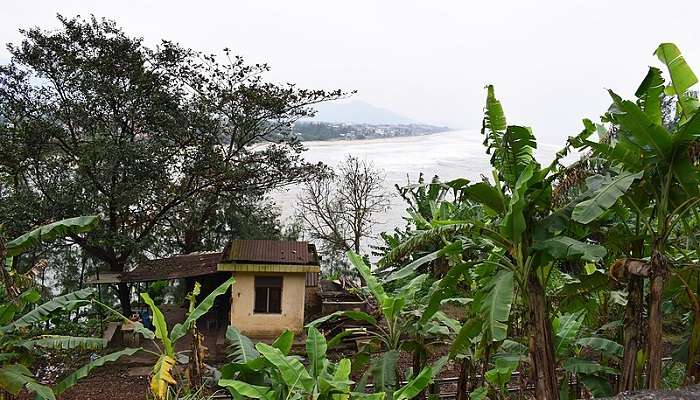
Reaching Hai Van Pass is relatively easy. If you’re coming from Da Nang or Hoi An, you can take a motorbike or a taxi along National Route 1A. Public buses also ply this route, though their schedules may be less frequent. Alternatively, you can join a guided tour that includes transportation to the pass. From Hue, you can take a taxi, rent a motorbike, or take a guided tour with a scenic drive through the Hai Van Pass.
Further Read: Wildlife In Hanoi
The Hai Van Pass is more than just a scenic route; it’s a window into Vietnam’s rich history and evidence of its breathtaking natural beauty. Whether you’re a history buff seeking historical exploration, a nature enthusiast yearning for breathtaking vistas, or an adventurer seeking a thrilling motorbike ride, Hai Van Pass has something for everyone. As you prepare for your next trip to Vietnam, include this scenic viewpoint in your itinerary.
For our editorial codes of conduct and copyright disclaimer, please click here.
Cover Image Credit: Tuabiht Rellahcs for Wikimedia Common
Frequently Asked Questions About Hai Van Pass
What are the best places to stay near Hai Van Pass?
There aren’t any accommodations right around Hai Van Pass. However, nearby places like Da Nang, Hoi An, and Lang Co offer luxury accommodations.
Why should you visit Hai Van Pass in Vietnam?
Hai Van Pass, despite the lack of an extravagant sightseeing experience, is a spot worth adding to your itinerary. It holds a lot of historical significance and offers offbeat views and experiences.
What is the elevation of Hai Van Pass?
Hai Van Pass is located at an elevation of 496 m above sea level.
How long is Hai Van Pass?
The pass is roughly 21 km long, so you can explore the entire scenic route on a motorbike, and explore the viewpoints and the charming views from the route.
What is the closest airport to Hai Van Pass?
The closest airport to the Hai Van Pass is Da Nang International Airport.
People Also Read:
Nathula Pass Rohtang Pass Changla Pass

As a Travel Content Writer, I live to conquer the world of globetrotting with words. With my unquenchable thirst for storytelling, I believe that my words will inspire you to travel around the world’s breathtaking landscapes. As for me, I am an unapologetic selenophile, who loves to wander around in a starry night!











